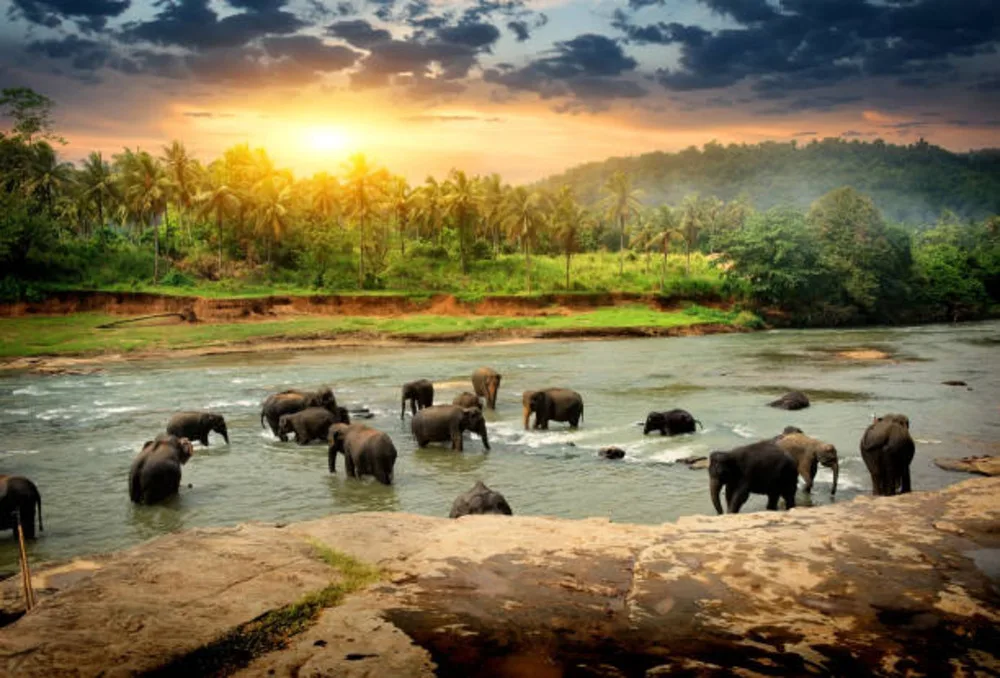India is a land of diverse landscapes, from the towering Himalayas to the lush Western Ghats, and this natural diversity extends to its incredible wildlife. The country is home to some of the world’s most iconic animals, including Bengal tigers, Asiatic elephants, and Indian rhinoceroses. If you’re an avid nature enthusiast or simply looking for an unforgettable adventure, exploring the top wildlife sanctuaries in India should be at the top of your travel list. In this blog, we’ll take you through the most enchanting wildlife sanctuaries in India, offering tips on the best time to visit, what to expect, and why each sanctuary is worth exploring.
- Encounter Majestic Wildlife: Discover India’s Premier Sanctuaries
- 1. Ranthambore National Park, Rajasthan
- 2. Jim Corbett National Park, Uttarakhand
- 3. Kaziranga National Park, Assam
- 4. Sundarbans National Park, West Bengal
- 5. Gir National Park, Gujarat
- 6. Periyar Wildlife Sanctuary, Kerala
- 7. Bandhavgarh National Park, Madhya Pradesh
- 8. Nagarhole National Park, Karnataka
- 9. Manas National Park, Assam
- 10. Pench National Park, Madhya Pradesh
- Conclusion: Embrace the Wild in India’s Top Wildlife Sanctuaries
- FAQs
Encounter Majestic Wildlife: Discover India’s Premier Sanctuaries
India’s top wildlife sanctuaries offer a gateway to experiencing nature’s wonders like never before. From the elusive Bengal tiger in Ranthambore National Park to the one-horned rhinoceros in Kaziranga, these sanctuaries provide a thrilling encounter with some of the world’s most majestic animals. Each of these top wildlife sanctuaries in India is a testament to the country’s commitment to conservation and offers visitors a unique opportunity to witness wildlife in its natural habitat. Whether you’re trekking through the dense jungles of Jim Corbett National Park or cruising along the serene waters of Periyar Wildlife Sanctuary, the beauty and diversity of India’s top wildlife sanctuaries will leave you in awe.
1. Ranthambore National Park, Rajasthan
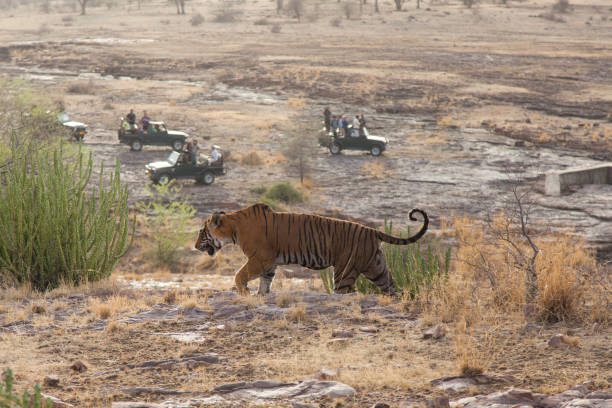
Located in the heart of Rajasthan, Ranthambore National Park is one of the most renowned wildlife sanctuaries in India. It is famous for its population of Bengal tigers, which are often spotted roaming the park’s dry deciduous forests and open grasslands. As one of the top wildlife sanctuaries in India, Ranthambore offers a unique opportunity to witness these majestic predators in their natural habitat, making it a must-visit for wildlife enthusiasts.
- Best Time to Visit: October to June
- What to Expect: Apart from tigers, you can spot leopards, sloth bears, and various species of birds. The park also houses the ancient Ranthambore Fort, adding a touch of history to your wildlife adventure.
- Why Visit: The thrill of spotting a tiger in the wild, coupled with the park’s stunning landscape, makes Ranthambore a must-visit for wildlife enthusiasts.
2. Jim Corbett National Park, Uttarakhand
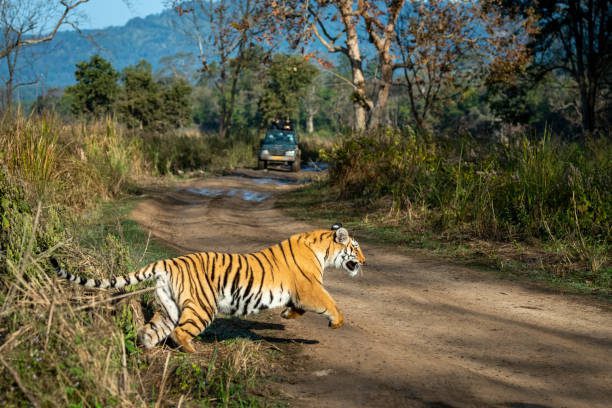
Jim Corbett National Park holds the distinction of being the oldest national park in India, established in 1936 to protect the endangered Bengal tiger. The park’s diverse ecosystem, which includes grasslands, riverine belts, and a large lake, makes it one of the top wildlife sanctuaries in India. As one of the top wildlife sanctuaries in India, Jim Corbett offers a rich and varied landscape that provides a perfect habitat for a wide range of wildlife, making it a premier destination for nature lovers and wildlife enthusiasts alike.
- Best Time to Visit: November to June
- What to Expect: The park is home to a variety of flora and fauna, including elephants, leopards, and over 600 species of birds. The Ramganga River that flows through the park is also a great spot for fishing enthusiasts.
- Why Visit: A visit to Jim Corbett is like stepping into the pages of a wildlife book, where every turn in the jungle offers a new and thrilling encounter.
3. Kaziranga National Park, Assam
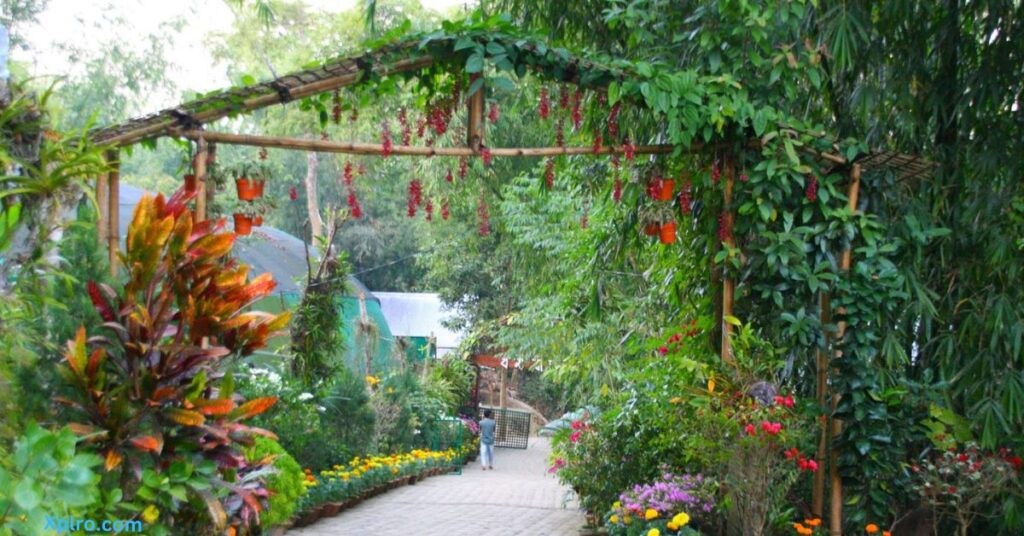
Situated in the northeastern state of Assam, Kaziranga National Park is a UNESCO World Heritage site and is globally acclaimed for its population of the one-horned rhinoceros. As one of the top wildlife sanctuaries in India, this park plays a crucial role in the conservation of several endangered species. Kaziranga‘s unique biodiversity and successful conservation efforts make it a standout among the top wildlife sanctuaries in India, offering visitors a chance to witness some of the rarest wildlife in the world.
- Best Time to Visit: November to April
- What to Expect: Apart from the rhinos, Kaziranga is also home to tigers, elephants, and wild water buffaloes. The park’s wetlands attract numerous migratory birds, making it a paradise for birdwatchers.
- Why Visit: Kaziranga’s untouched beauty and the opportunity to see the one-horned rhinoceros up close make it one of the top wildlife sanctuaries in India.
4. Sundarbans National Park, West Bengal
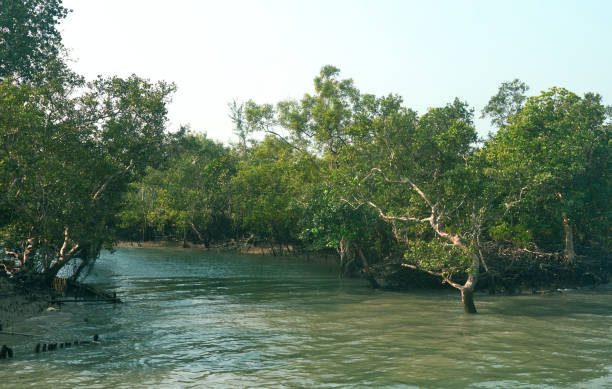
The Sundarbans National Park is part of the largest mangrove forest in the world and is located in the delta region of the Padma, Meghna, and Brahmaputra rivers. Renowned as one of the top wildlife sanctuaries in India, the park is famous for its population of the elusive Royal Bengal Tiger. Sundarbans National Park stands out among the top wildlife sanctuaries in India for its unique ecosystem, where the dense mangroves provide a perfect habitat for this majestic predator, offering a truly unforgettable wildlife experience.
- Best Time to Visit: September to March
- What to Expect: The unique ecosystem of the Sundarbans supports a variety of wildlife, including saltwater crocodiles, spotted deer, and numerous bird species. The network of rivers and creeks makes boat safaris an exciting way to explore the park.
- Why Visit: The chance to see a Royal Bengal Tiger in its natural mangrove habitat is an experience like no other.
5. Gir National Park, Gujarat
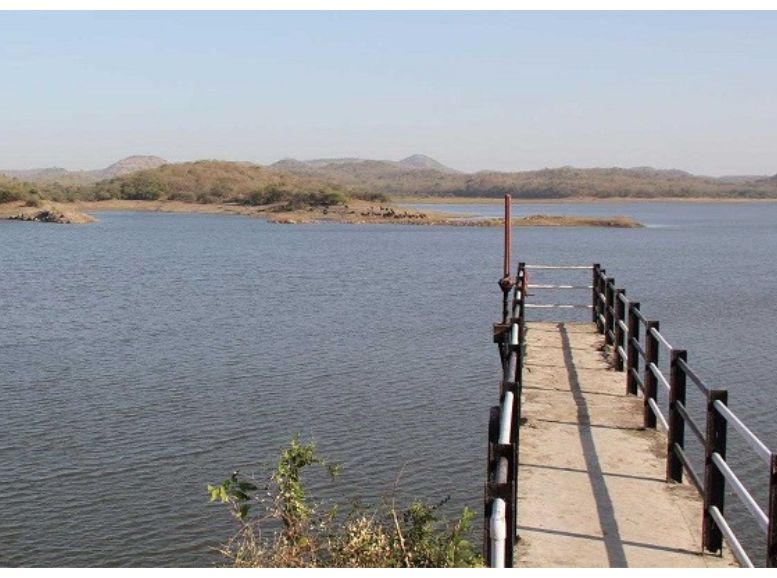
Gir National Park is the only place in the world where you can see Asiatic lions in the wild. Located in the western state of Gujarat, this sanctuary is one of the top wildlife sanctuaries in India and plays a crucial role in the conservation of these majestic animals. As a key destination among the top wildlife sanctuaries in India, Gir National Park offers a unique opportunity to witness Asiatic lions in their natural habitat, making it a must-visit for wildlife enthusiasts and conservationists alike.
- Best Time to Visit: December to April
- What to Expect: Besides lions, the park is home to leopards, hyenas, and a variety of bird species. The hilly terrain and mixed deciduous forests make it a visually stunning location.
- Why Visit: Gir offers a unique opportunity to observe the last remaining population of Asiatic lions, making it a must-visit destination for wildlife lovers.
6. Periyar Wildlife Sanctuary, Kerala
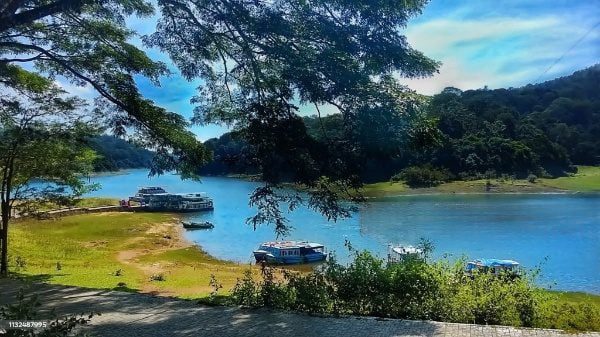
Nestled in the Western Ghats, Periyar Wildlife Sanctuary is renowned for its picturesque setting around Periyar Lake. As one of the top wildlife sanctuaries in India, the sanctuary is a major tiger reserve and also supports a healthy population of elephants. Periyar Wildlife Sanctuary stands out among the top wildlife sanctuaries in India for its stunning landscapes and diverse wildlife, offering visitors a chance to experience the natural beauty and wildlife of this exceptional sanctuary.
- Best Time to Visit: October to April
- What to Expect: Boat cruises on Periyar Lake offer a unique way to view wildlife, including elephants, gaur, and various species of birds. The sanctuary’s lush greenery and serene environment make it an ideal spot for nature lovers.
- Why Visit: Periyar offers a perfect blend of wildlife and scenic beauty, making it one of the top wildlife sanctuaries in India.
7. Bandhavgarh National Park, Madhya Pradesh
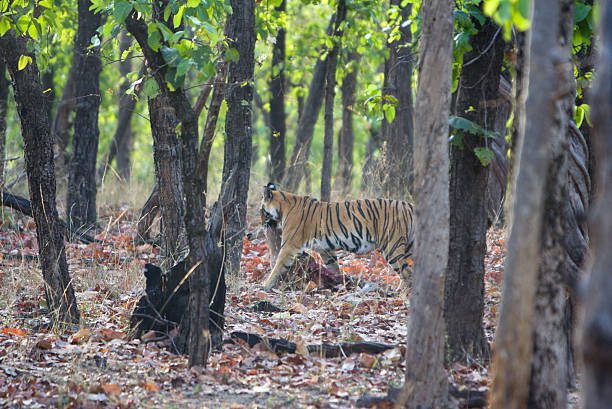
Bandhavgarh National Park is known for having one of the highest densities of Bengal tigers in the world. Located in Madhya Pradesh, this park is renowned as one of the top wildlife sanctuaries in India. Bandhavgarh National Park’s rich history, with the ancient Bandhavgarh Fort overlooking the reserve, adds to its allure. As a leading destination among the top wildlife sanctuaries in India, Bandhavgarh offers an extraordinary opportunity to see Bengal tigers up close, surrounded by a landscape that blends wildlife and historical grandeur.
- Best Time to Visit: October to June
- What to Expect: Besides tigers, the park is home to leopards, deer, and a variety of bird species. The hilly terrain and dense forests provide a stunning backdrop for wildlife photography.
- Why Visit: The combination of historical ruins and rich wildlife makes Bandhavgarh a unique destination for both history buffs and wildlife enthusiasts.
8. Nagarhole National Park, Karnataka
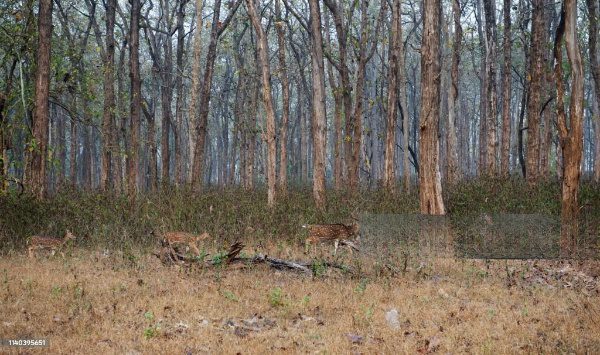
Part of the Nilgiri Biosphere Reserve, Nagarhole National Park in Karnataka is a haven for wildlife. As one of the top wildlife sanctuaries in India, the park’s landscape is a captivating mix of dense forests, small streams, and waterfalls. Nagarhole National Park stands out among the top wildlife sanctuaries in India for its breathtaking scenery and rich biodiversity, making it a top choice for those looking to immerse themselves in the beauty of India’s natural heritage.
- Best Time to Visit: October to May
- What to Expect: The park is home to a variety of animals, including tigers, elephants, and Indian bison. The Kabini River that flows through the park is a popular spot for wildlife sightings.
- Why Visit: Nagarhole offers an authentic jungle experience, where you can witness the raw beauty of India’s wilderness.
9. Manas National Park, Assam
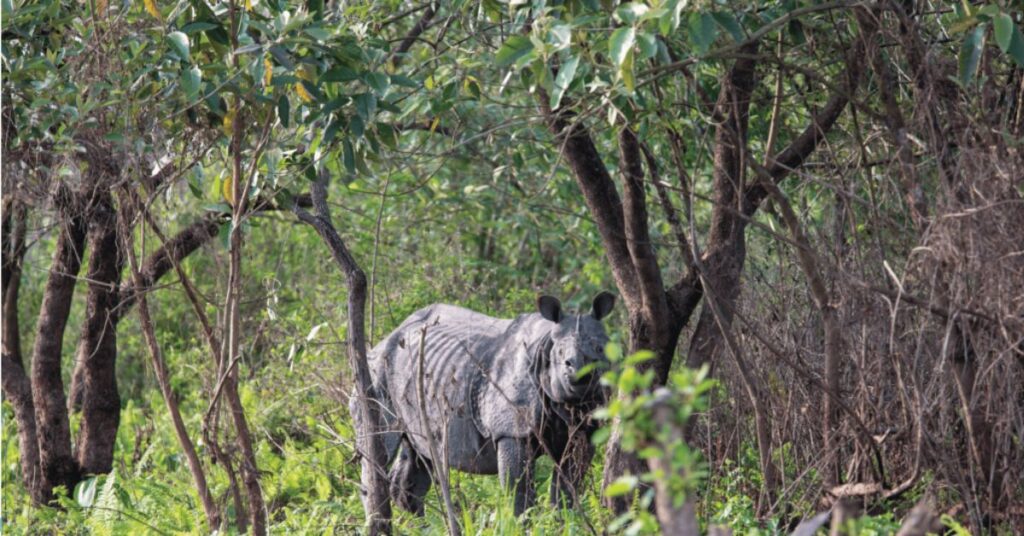
Manas National Park is another UNESCO World Heritage site located in Assam. Renowned as one of the top wildlife sanctuaries in India, the park is famous for its stunning landscape, which includes grasslands, forests, and the Manas River. Manas National Park stands out among the top wildlife sanctuaries in India for its diverse ecosystems and rich biodiversity, offering visitors a remarkable wildlife experience in a breathtaking setting.
- Best Time to Visit: October to April
- What to Expect: Manas is home to several endangered species, including the Assam roofed turtle, hispid hare, and golden langur. The park’s rich biodiversity and scenic beauty make it a top destination for wildlife enthusiasts.
- Why Visit: The diverse wildlife and the park’s role in conservation efforts make Manas a must-visit sanctuary in India.
10. Pench National Park, Madhya Pradesh
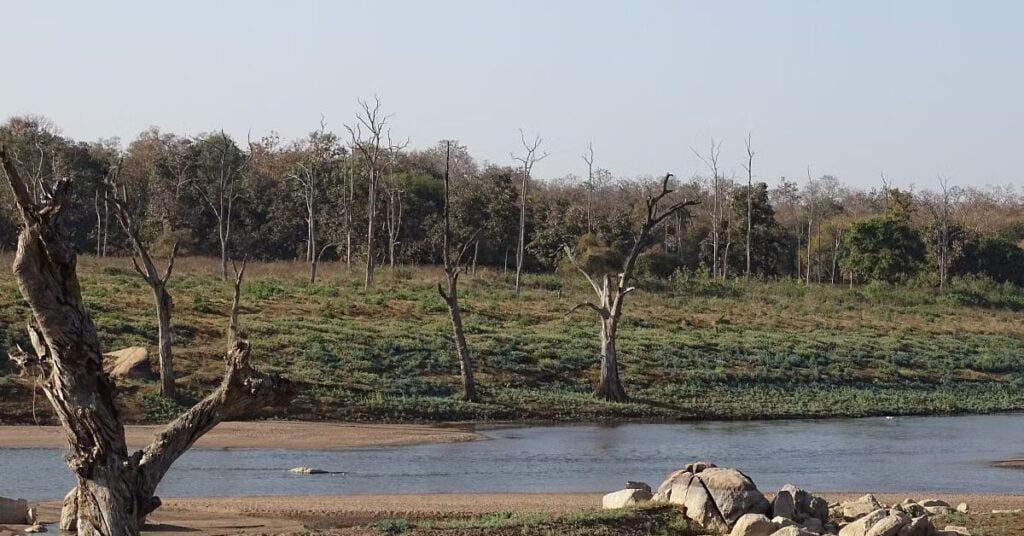
Pench National Park is located in the Satpura range of Madhya Pradesh and is famously known as the setting for Rudyard Kipling’s novel “The Jungle Book.” Recognized as one of the top wildlife sanctuaries in India, the park is celebrated for its rich wildlife and scenic beauty. Pench National Park offers visitors a chance to explore one of the top wildlife sanctuaries in India with its diverse flora and fauna, making it a must-visit destination for nature lovers and wildlife enthusiasts.
- Best Time to Visit: November to May
- What to Expect: Pench is home to tigers, leopards, and a variety of herbivores. The park’s dense forests and tranquil river make it a perfect spot for a peaceful wildlife getaway.
- Why Visit: The chance to explore the inspiration behind “The Jungle Book” and the park’s diverse wildlife make Pench a unique destination.
Conclusion: Embrace the Wild in India’s Top Wildlife Sanctuaries
India’s top wildlife sanctuaries are more than just destinations; they are gateways to the heart of nature. Whether you’re a seasoned traveler or a wildlife enthusiast, these sanctuaries offer an unparalleled experience that brings you closer to some of the world’s most incredible species. From the dense jungles of Jim Corbett to the lush wetlands of Kaziranga, each of these top wildlife sanctuaries in India promises an adventure filled with awe and inspiration.
As you plan your next journey, consider the wonders that await you in these top wildlife sanctuaries in India. Whether it’s the thrill of spotting a Bengal tiger or the serenity of watching elephants bathe in a river, the experiences in these sanctuaries are sure to leave a lasting impression. Embrace the wild, respect nature, and let India’s top wildlife sanctuaries be the highlight of your travel adventures.
FAQs
Q1: What is the best time to visit wildlife sanctuaries in India?
A1: The best time to visit most wildlife sanctuaries in India is from October to June when the weather is pleasant and animals are more active. However, this can vary depending on the specific sanctuary and its geographical location.
Q2: Are wildlife safaris safe in India?
A2: Yes, wildlife safaris in India are generally safe. They are conducted by trained professionals who are familiar with the behavior of the animals. It is important to follow all guidelines and instructions provided by the safari guides to ensure safety.
Q3: Can I visit multiple wildlife sanctuaries on a single trip to India?
A3: Yes, it is possible to visit multiple wildlife sanctuaries on a single trip, especially if they are located in the same region. Planning your itinerary carefully and allowing enough time for each sanctuary will enhance your experience.
Q4: What should I pack for a wildlife safari in India?
A4: When packing for a wildlife safari, include comfortable clothing, a hat, sunscreen, binoculars, a camera, and sturdy shoes. It’s also advisable to carry insect repellent and a good pair of sunglasses.
Q5: Are there accommodations available within the wildlife sanctuaries?
A5: Many wildlife sanctuaries in India offer accommodation options ranging from budget lodges to luxury resorts. Staying within or near the sanctuary can enhance your wildlife experience by allowing early morning and late evening safaris.
Explore More
Ready to embark on more exciting adventures? Explore more of India’s natural wonders and travel experiences on Xplro.com. Whether you’re planning a trek in the Himalayas, a serene beach getaway, or a historical journey through India’s ancient monuments, we’ve got you covered with expert guides, travel tips, and unforgettable itineraries. Discover the world with Xplro.com and make your next trip truly memorable!




